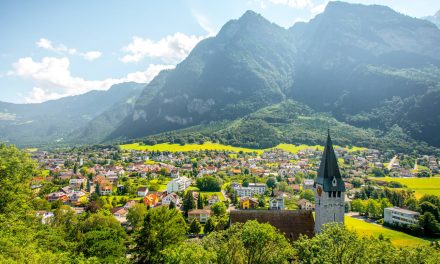Moving to a new city is a big step, filled with both excitement and a bit of nervousness. It’s not just about moving stuff; it’s about starting a new chapter in a different place. It helps to know about the city before you move.
Learning about everything from cool local spots to important places like hospitals can make you feel more ready and less nervous. It’s about making the new place feel like home.
You can explore through online tours or by walking around different areas, talking to people, and really getting to know the city’s life and rules. Doing this homework makes settling in less stressful and adds fun to your new start.
- Community Activities
Engaging in community activities is essential to involve yourself in various local events and initiatives to truly feel a part of your new community. Consider attending community theater productions or enrolling in workshops that pique your interest.
However, to actively participate and enjoy such activities, a comfortable settlement in your new home is a prerequisite. Moving can be stressful, often taking longer than expected for people to finally feel “at home” and divert their attention to community engagement.
This stress can be significantly reduced by employing a professional moving service. Reliable movers take over the demanding aspects of the move, allowing you to focus on adapting to your new surroundings. It’s crucial, though, to choose established and reputed companies for this task. Hiring a company like Pickens Kane Moving & Storage can ensure that the transition is not just about shifting your belongings but also about smoothly paving the way into your new life phase.
- Virtual Tours
Websites and apps dedicated to city tours showcase various neighborhoods, highlighting everything from parks to local landmarks. Some even offer insights into public facilities, shopping centers, and recreational areas. These virtual experiences provide a practical understanding of what living in that area might be like.
But it’s not just about viewing; it’s about planning. You can list down the places that appeal to you, understand the distances between essential services, and even spot potential leisure spots.
This preparation makes actual on-ground exploration more focused, as you would already know which areas you want to see in person. Plus, it helps in discussing potential neighborhoods with real estate agents or locals, giving you specific reference points.
- Using Public Transportation
When you’re on a bus, train, or tram, you travel with the locals, which is an experience driving doesn’t provide. It also helps in learning the city’s geography. You’ll understand how neighborhoods connect, where different amenities are, and what routes might be convenient for your routine.
Observing which stops are the busiest can give you a direct sense of the city’s more active areas. Additionally, it’s a chance to witness the diversity of the community, see a cross-section of the population, and listen to the local dialects or languages in use.
Moreover, public transportation is cost-effective. You save on gas and parking fees, and the experience can help you decide if you can rely on it for daily commuting or prefer having a vehicle.
- Visiting Local Eateries and Cafes
Local eateries and cafes are more than just food providers; they’re community gathering points where you can observe and engage with the daily lives of residents. By choosing places favored by locals over more tourist-oriented spots, you encounter authentic flavors and dishes that define the area’s culinary heritage.
This approach isn’t just about food; it’s a social exploration. Locals dining around you are potential sources of invaluable information. Casual chats could lead to recommendations for hidden gems, lesser-known attractions, or community events that aren’t widely advertised.
These interactions may offer insights into various lifestyle aspects, like the job market, reputable schools, or trustworthy services within the city. Additionally, visiting these eateries supports local businesses, contributing to the community’s economic health.
- Exploring Educational and Job Opportunities
It’s important to personally visit various schools or universities, if applicable, to get a firsthand understanding of the educational environment. These visits can help assess the quality of education, observe the facilities, and learn about the enrollment criteria, which is crucial for families with children or those pursuing further studies.
On the job front, it’s wise to engage in activities that increase your professional network. Attend local job fairs, as they are often reflective of the city’s job market, showing which skills are in demand. Networking events or community meetups are also crucial because they provide opportunities to meet local professionals, learn about the city’s industry trends, and possibly land job interviews.
- Checking Health and Emergency Services
Understanding the local healthcare status is essential when moving to a new city. Start by identifying the nearest medical facilities, including hospitals, clinics, and pharmacies. Knowing their locations could be vital during an emergency. It’s equally important to understand the specifics of health insurance coverage in your new area, particularly any regional differences if you’ve moved long distances.
Emergency services are another critical aspect. Familiarize yourself with available emergency response options, such as ambulance services, hotlines for immediate assistance, and even quick-response apps. Inquire about average response times and seek reviews or testimonials about the reliability of these services. Such information is often overlooked but is crucial in urgent situations.
- Visiting Public Libraries and Cultural Centers
When you move to a new city, visiting public libraries and cultural centers are much more than buildings with books and art; they’re hubs of community life. Here, you can learn about the historical background of your new area.
Additionally, these centers typically organize various events, including educational workshops, discussions, and artistic performances. Participating in these can provide a more profound understanding of the intellectual pulse and cultural richness of the community.
You get to interact with locals, which also aids in building meaningful connections. Public libraries offer another benefit: they are places of quiet. It can be a place where you can pause, reflect, and plan your next steps in exploring your new home.
Conclusion
Exploring a new city is more than sightseeing. It involves diving deep into its culture, systems, and norms. From savoring local foods to understanding laws, each step shapes your experience. Engaging with neighbors or attending events helps you blend in. Embrace the journey, enriching yourself while contributing positively to the community fabric.





